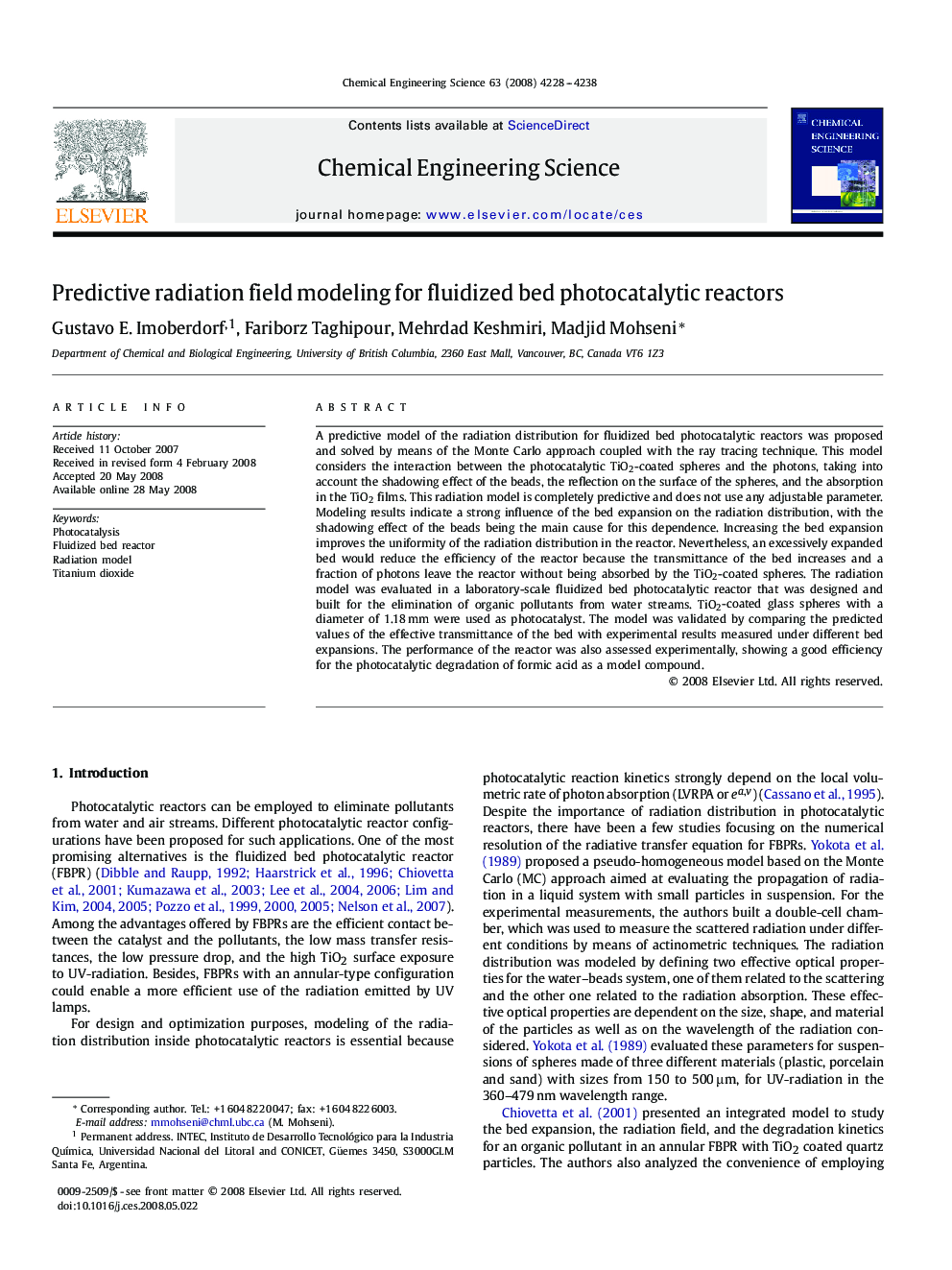| Article ID | Journal | Published Year | Pages | File Type |
|---|---|---|---|---|
| 158332 | Chemical Engineering Science | 2008 | 11 Pages |
A predictive model of the radiation distribution for fluidized bed photocatalytic reactors was proposed and solved by means of the Monte Carlo approach coupled with the ray tracing technique. This model considers the interaction between the photocatalytic TiO2TiO2-coated spheres and the photons, taking into account the shadowing effect of the beads, the reflection on the surface of the spheres, and the absorption in the TiO2TiO2 films. This radiation model is completely predictive and does not use any adjustable parameter. Modeling results indicate a strong influence of the bed expansion on the radiation distribution, with the shadowing effect of the beads being the main cause for this dependence. Increasing the bed expansion improves the uniformity of the radiation distribution in the reactor. Nevertheless, an excessively expanded bed would reduce the efficiency of the reactor because the transmittance of the bed increases and a fraction of photons leave the reactor without being absorbed by the TiO2TiO2-coated spheres. The radiation model was evaluated in a laboratory-scale fluidized bed photocatalytic reactor that was designed and built for the elimination of organic pollutants from water streams. TiO2TiO2-coated glass spheres with a diameter of 1.18 mm were used as photocatalyst. The model was validated by comparing the predicted values of the effective transmittance of the bed with experimental results measured under different bed expansions. The performance of the reactor was also assessed experimentally, showing a good efficiency for the photocatalytic degradation of formic acid as a model compound.
